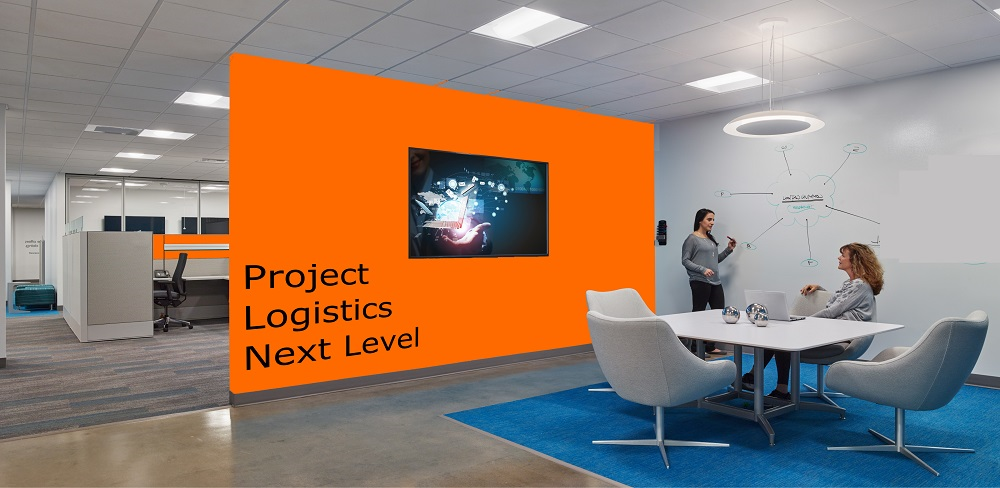In this articles, we’ll talk about definition and a brief history of the XELLZ Project Logistics Control Centers (PLCC), its importance, different usage scenarios in several sectors, its infrastructure, how we came to choose the right technology, integration of all our solutions, importance of qualified training, IT system and usage with high productivity as brief as possible. But before we start, we’d like to underline one major point which effects everything that we’ll talk about: The Human factor…
No matter which technologies or solutions we use and no matter how superior AI (Artificial Intelligence) & automation systems became these days, in the end of the day, especially in the project logistics industry, we all still depend strongly on the human factor. All the systems we’ve created (technological or not) have one basic common drive; to make things easier for us and for the projects we control. By forgetting this core principle and taking things a bit too far, experts have started to try implementing fully automated systems as so-called inevitable infrastructural requirements of modern times (such as IoT) and called it, Industry 4.0, or also known as the Fourth Industrial Revolution (4IR). That’s how the new age began…
Just a couple years after the introduction of 4IR, some potential consequences concerning millions of people (initially) are now starting to get on surface and it’s not always good. Today, after seeing some of those possible potential scenarios, authorities have already started to discuss bringing human-force back in action with Industry 5.0, or Fifth Industrial Revolution (5IR), and now they’re trying to find a common ground between automation & human-force to find the perfect definition for it.
Typically working with our non-stop (365/24/7) PLCC, monitoring & controlling the flow of project logistics data/information at the same time, communicating with related remote locations and commanding them from the core, taking action if needed, Project Control Centers are mission critical environments to ensure success of multi-disciplined organizations with 100% productivity, transparency and efficiency.
As you can see, just like all other innovations, we have started using Project Logistics Control Centers for different industrial sectors. Our concepts have changed the way we look at project logistics. Also, as the ease of use have proven over and over again, after the beginning of each project, these project logistics control centers have started to be used for various purposes with one aim: controlling all resources within reach and act in case of a need arise.
Section II
In this section, we’ll highlight the importance of the Project Logistics Control Centers (PLCC’s) and its different usage scenarios.
PLCC’s are the perfect fit to see the big picture through all angles of the project and leave nothing in the shadows. This enables a safe risk-analysis which is a major factor to take “element of surprise” under control.
To eliminate the threat of losing control of interconnected projects that should work continuously without any delay or failure, one should do a complex analysis (project monitoring) that checks every finer detail in the background. Even if just one minor part of operations which might not look like a major one causes an issue, a per-evaluated prevention method shall be taken into action. This can be done up to a certain point by using our automated IT platform. Though, an operational team should always be up and ready to take the helm as there’s no certainty that one failure won’t trigger another one at a completely other time (cause & effect).
One of the main advantages of our PLCC’s is the ability to bring many different disciplines together and establish connections between them. That way, project logistics managers can than control them from all different sources at the same time. Without these logistics control centers, every discipline would need a different source to try and collaborate with each other, and that would often end up in vain. That would cost a significant loss financially. We’re not even mentioning the invaluable time being lost.
Usage of PLCC’s provide advantages for many different industry sectors that require logistics monitoring of projects and taking control over in an instant when necessary. Here are some of the major sectors that use the Project Logistics Control Centers:
Sector III
Even though many companies are able to work the logistics on their own or with a freight forwarder on a daily basis, they would still need constant checking the project logistics operators. The PLCC is there to monitor all movements, actions, documentation, survey and other reporting, etc. on a constant basis.
Production lines need to be under instant control for preventing unwanted outcomes. Source & inventory control, factory automation systems and all infrastructures should be under control for healthy operation. Many millions are spend optimizing these processes. However, too many times the logistics is not taking as much attention as it should. logistics is a top vital point in any process or project and should never be taken lightly.
Project logistics control centers direct liners, trucks, aircrafts and anything else that is needed for the project as well as other relevant resources to reach the job site in time. During crisis situations such as natural disasters, coordination between the project logistics centers can potentially save a lot of project failure and costs in an instant.
Depending on needs of different sectors and requirements of physical environments, devices & technologies used inside a Project Logistics Control Center might change quite a bit. However, many of those core technologies such as projeXsmart, operator stations, security and survey & inspection reporting protocols stay the same.
More information can be found here: www.xellz.com or email to info[at]XELLZ.com




